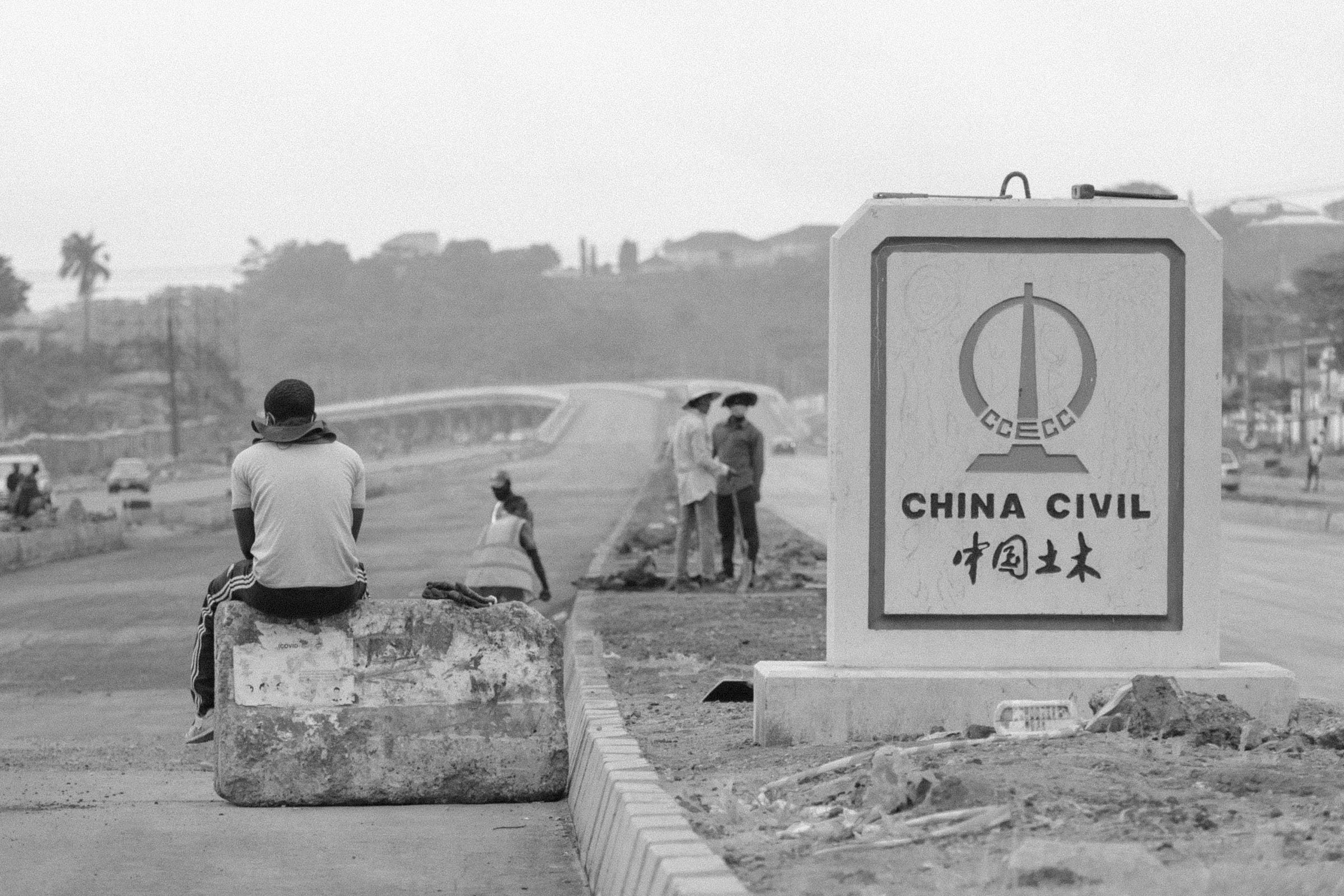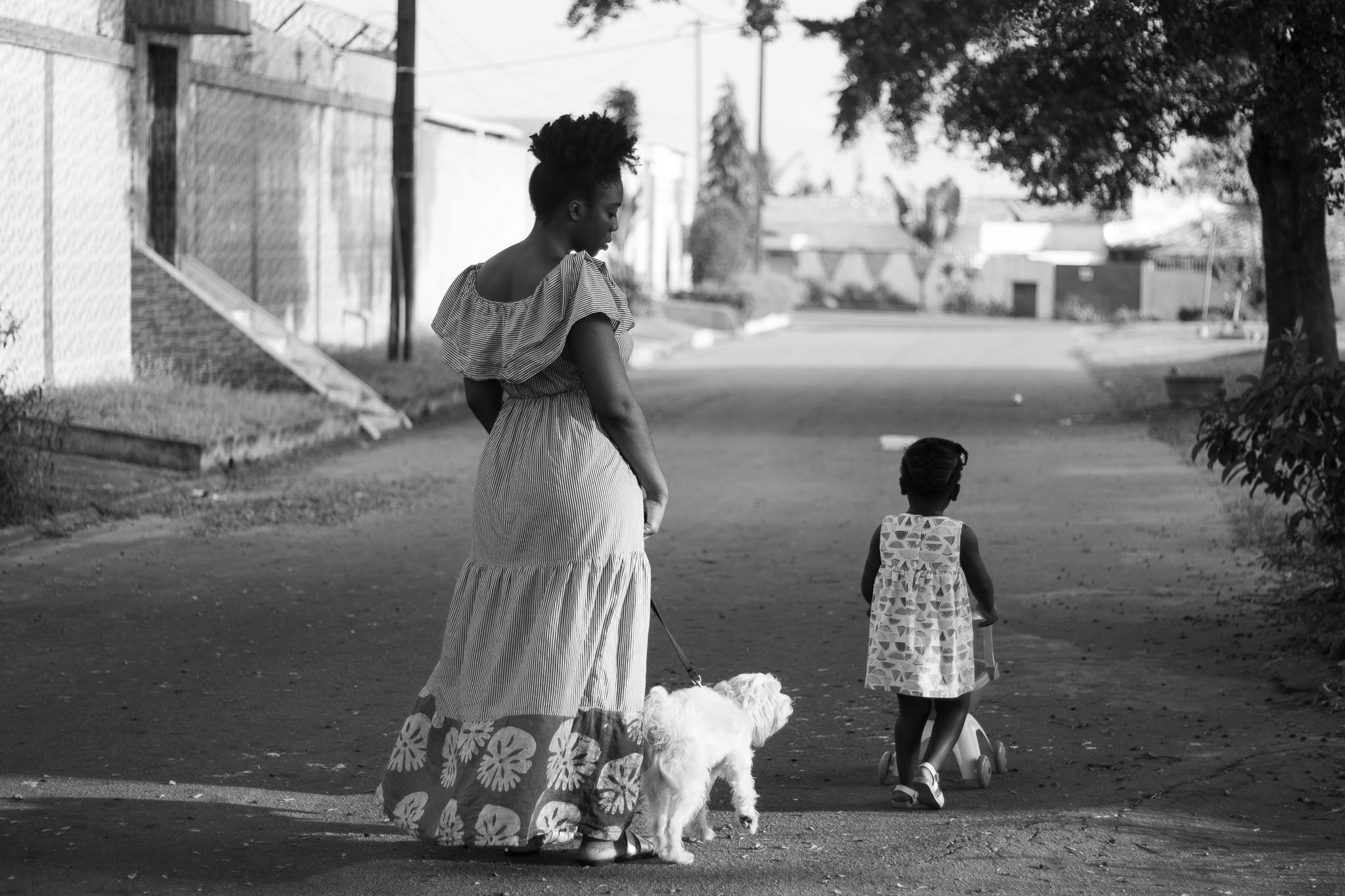The Road
Photographs by Ifebusola Shotunde, Hady Barry, Mohamed Fouad Semmache, and Verity FitzGerald, previously featured on Tender Photo.




The sharpest figure in Ifebusola Shotunde’s photograph is the road construction worker sitting with his back to the viewer. He is more at ease than the others, the twin sets of men, who are either bending or standing, lifting wheelbarrows or wearing masks. A block bears the name of the construction company, its logo, and underneath, a handful of Chinese letters. Farther above is a range of hills. The grey of the sky touches the black of trees and shrubbery. Cars dot the three-laned highway, steadying along the even terrain, making the scene seem quiet. Yet the men who are not sitting suggest this is a setting of constant activity, a road being smoothed along a rocky terrain.
In Hady Barry’s photograph, where the street is free of hubbub, we might wonder about the interior life of the pedestrians. If the dog and child with their raised paw and leg seem assured, the woman is counterpoised with planted feet. Her lips sulky, her head bowed, her pose worried. A spray of leaves litter the ground, like confetti arrayed in celebration of those who seek comfort in the enclose of a solitary road. “Her head is bent down and she's completely lost in thought,” writes Barry of her friend Azi. “She's entirely open and vulnerable.”
Yet an open road—as a thoroughfare, a path from one place to another—is not exactly a place for vulnerability. See the photograph by Mohamed Fouad Semmache, of men in a bentonite quarry in the western region of Algeria. They seem to have no intent in dallying; the most consequential aspect of their presence is the incline of their legs as it makes its way up. In the distance the hills unfold in a rhythmic array, and it would seem they intend to move toward a thread of stones, anywhere but here.
The sky and river in Verity FitzGerald’s predawn photograph is set in blue. Even the house is cast with a tint of azure. The road is pictured at a point from which it inclines into a bend. When you round the corner, you arrive at the house. From there you can stare down at the river, and it looks back up with tides of omniscience. “Those nights on Robben Island, alone and free to roam as I liked, were both eerie and magical—a very intimate experience,” FitzGerald writes. “The history of the island weighed heavily on me and seeing this one lonely building gazing back at the mainland as dawn broke, felt poignant.” It is here that all the other roads lead: a lone house on an island lit with a curious hint of solitude. ••••
This is the #10 edition of CONCORDANCE, a series of micro-essays in response to sequences of photographs previously featured on the newsletter. These notes, inspired by CORRESPONDENCES, points to affinities in style, mood, or theme between the tendered photos.
TENDER PHOTO is a bi-weekly newsletter on African photography, published Wednesdays and Saturdays. See the archive for more features on early to mid-career photographers, or submit your work. If this newsletter was shared with you, consider subscribing, or forward to a friend. Please whitelist the newsletter to ensure you never miss it.

